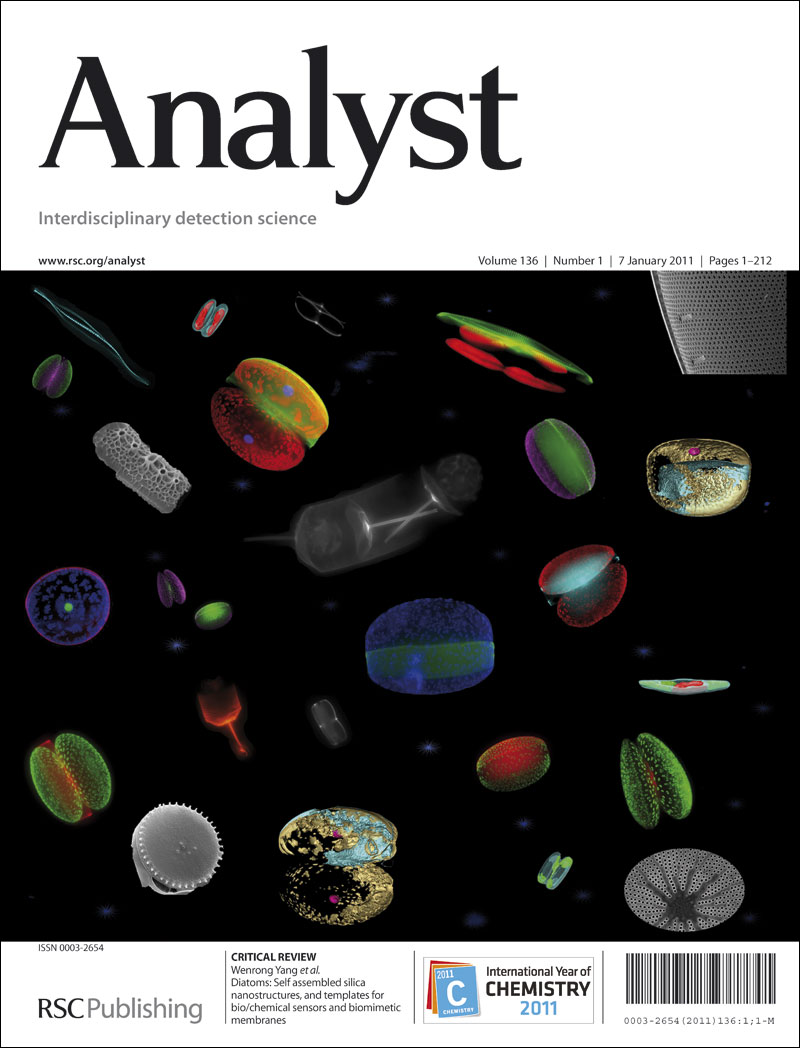High-sensitivity Detection of Brilliant Blue by Disposable chitosan-biochar Electrochemical Sensors
IF 3.3
3区 化学
Q2 CHEMISTRY, ANALYTICAL
引用次数: 0
Abstract
This research created a disposable electrochemical sensor utilizing a chitosan-biochar (CS-H500) composite-modified glassy carbon electrode (GCE) for the very sensitive detection of brilliant blue (BB) in food products. The CS-H500 composite dispersion was synthesized using the ultrasonic dispersion method, while quantum chemical simulations clarified the adsorption mechanism of BB molecules on the electrode surface via π-π conjugation and electrostatic interactions. Optimized experimental settings comprised: 16 μL of CS-H500 dispersion modification, 300 seconds of accumulation period, and a pH 7.0 phosphate buffer. The results indicated that chitosan (CS) markedly enhanced the dispersibility of biochar, augmenting the effective surface area of the modified electrode by 2.53 times (0.179 cm2) in comparison to the bare GCE. The sensor demonstrated a linear detection range of 1.0×10-6 to 1.0×10-4 mol/L for BB, with a detection limit of 1.0×10-7 mol/L (S/N=3), acceptable recoveries (91.49%-102.18%), and commendable reproducibility (RSD=8.01%). Interference studies validated significant selectivity against citric acid, glucose, prevalent metal ions, and proficient differentiation from mixed pigments such as sunset yellow (SY) and fluorescein sodium (FS). The analysis of practical beverage samples confirmed its reliability. This disposable electrode design streamlines operations, prevents cross-contamination, and offers an effective option for on-site monitoring of food additives.一次性壳聚糖-生物炭电化学传感器高灵敏度检测亮蓝
本研究利用壳聚糖-生物炭(CS-H500)复合修饰玻碳电极(GCE)制造了一种一次性电化学传感器,用于非常灵敏地检测食品中的亮蓝(BB)。采用超声弥散法合成了CS-H500复合弥散体,量子化学模拟通过π-π共轭和静电相互作用阐明了BB分子在电极表面的吸附机理。优化的实验设置为:CS-H500分散改性剂16 μL,积累时间300秒,磷酸盐缓冲液pH 7.0。结果表明,壳聚糖(CS)显著提高了生物炭的分散性,修饰电极的有效表面积比裸GCE增加了2.53倍(0.179 cm2)。该传感器对BB的线性检测范围为1.0×10-6 ~ 1.0×10-4 mol/L,检出限为1.0×10-7 mol/L (S/N=3),回收率为91.49% ~ 102.18%,重现性(RSD=8.01%)良好。干扰研究证实了对柠檬酸、葡萄糖、常见金属离子的显著选择性,以及对混合色素(如日落黄(SY)和荧光素钠(FS))的熟练区分。通过对实际饮料样品的分析,验证了该方法的可靠性。这种一次性电极设计简化了操作,防止交叉污染,并为食品添加剂的现场监测提供了有效的选择。
本文章由计算机程序翻译,如有差异,请以英文原文为准。
求助全文
约1分钟内获得全文
求助全文
来源期刊

Analyst
化学-分析化学
CiteScore
7.80
自引率
4.80%
发文量
636
审稿时长
1.9 months
期刊介绍:
"Analyst" journal is the home of premier fundamental discoveries, inventions and applications in the analytical and bioanalytical sciences.
 求助内容:
求助内容: 应助结果提醒方式:
应助结果提醒方式:


